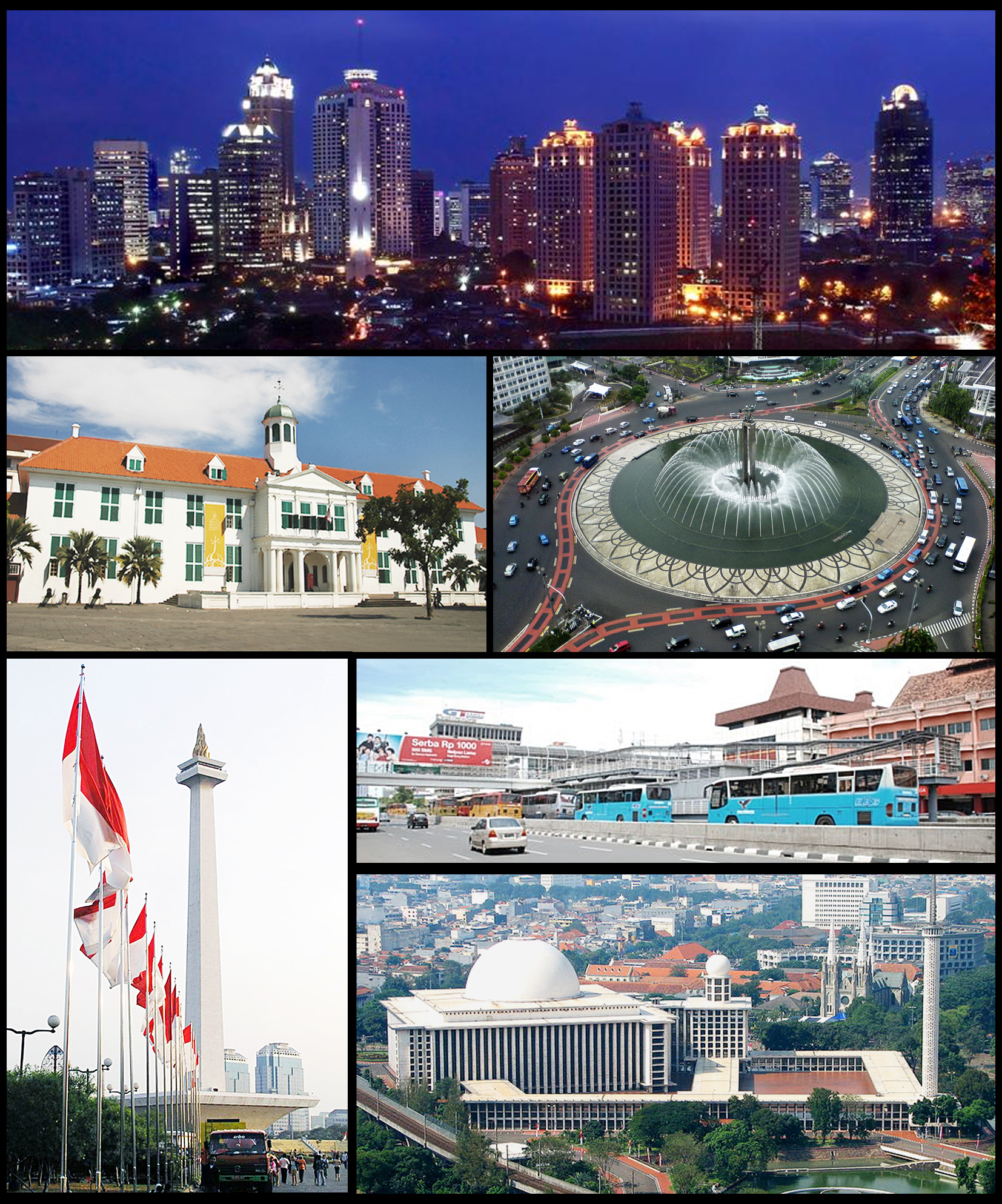Jakarta (English pronunciation: /dʒəˈkɑrtə/;[3] Indonesian: /dʒakarta/), officially the Special Capital Territory of Jakarta, is the capital and largest city of Indonesia. Located on the northwest coast of Java, it has an area of 661 square kilometres (255 sq mi) and a 2010 census count population of 9,580,000.[2] Jakarta is the country's economic, cultural and political centre. It is the most populous city in Indonesia and in Southeast Asia, and is the twelfth-largest city in the world. The metropolitan area, Jabodetabek, is the second largest in the world. Jakarta is listed as a global city in the 2008 Globalization and World Cities Study Group and Network (GaWC) research.[4] The city's name is derived from the Old Javanese word "Jayakarta" which translates as "victorious deed", "complete act", or "complete victory".
Established in the fourth century, the city became an important trading port for the Kingdom of Sunda. It grew as the capital of the colonial Dutch East Indies. It was made capital of Indonesia when the country became independent after World War II. It was formerly known as Sunda Kelapa (397–1527), Jayakarta (1527–1619), Batavia (1619–1942), and Djakarta (1942–1972).
Landmarks include the National Monument and Istiqlal Mosque. The city is the seat of the ASEAN Secretariat. Jakarta is served by the Soekarno-Hatta International Airport, Halim Perdanakusuma International Airport, and Tanjung Priok Harbour; it is connected by several intercity and commuter railways, and served by several bus lines running on reserved busways.
Bandung
Bandung (pronounced [bənˈduŋ]) (Indonesian: Kota Bandung) is the capital of West Java province in Indonesia, and the country's third largest city, and 2nd largest metropolitan area in Indonesia,[1] with 7.4 million in 2007. Located 768 m (2,520 ft) above sea level, Bandung has cooler temperatures year-around than most other Indonesian cities. The city lies in a river basin surrounded by volcanic mountains. This topography provides a good natural defense system, which was the primary reason for the Dutch East Indies government's plan to move the colony capital from Batavia to Bandung.
The Dutch colonials first opened tea plantations around the mountains in the eighteenth century, followed by a road construction connecting the plantation area to the capital (180 km or 112 miles to the northwest). The European inhabitants of the city demanded the establishment of a municipality (gemeente), which was granted in 1906 and Bandung gradually developed itself into a resort city for the plantation owners. Luxurious hotels, restaurants, cafes and European boutiques were opened of which the city was dubbed as Parijs van Java (Dutch: "The Paris of Java").
After Indonesian independence on 1945 onwards, the city experienced a rapid development and urbanization that has transformed Bandung from idyllic town into a dense 16500 people/km² metropolitan area, a living space for over 2 million people. Natural resources have been exploited excessively, particularly in the conversions of protected upland area into highland villa and real estates. Although the city has encountered many problems (ranging from waste disposal, floods to chaotic traffic system, etc.), Bandung however still has its charm to attract people flocking into the city, either as weekend travellers or living in.


No comments:
Post a Comment